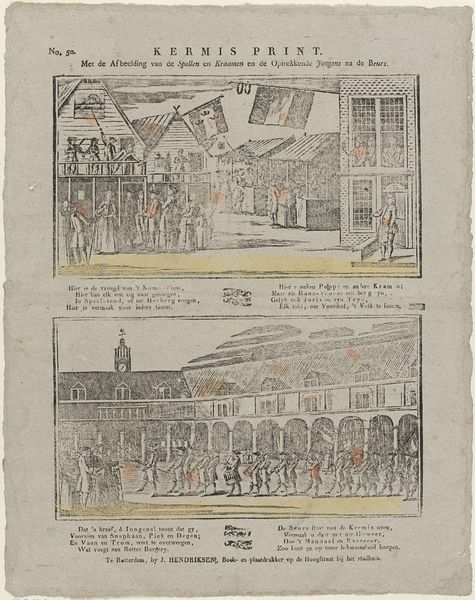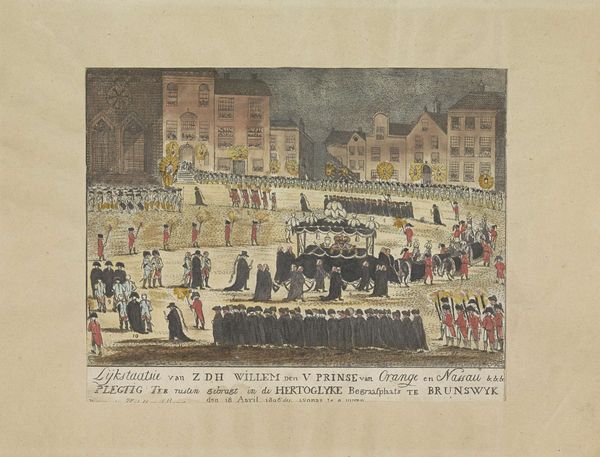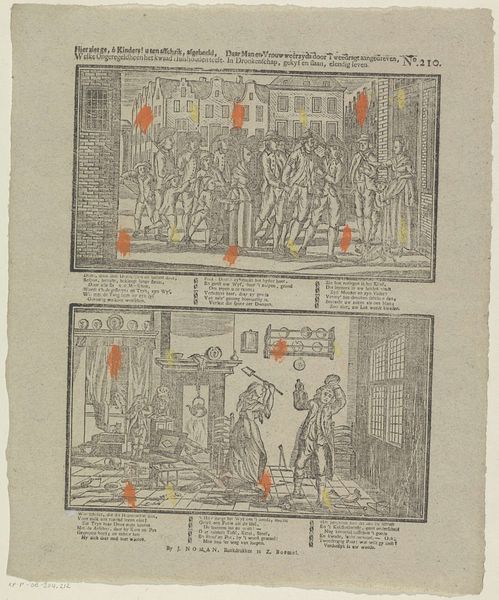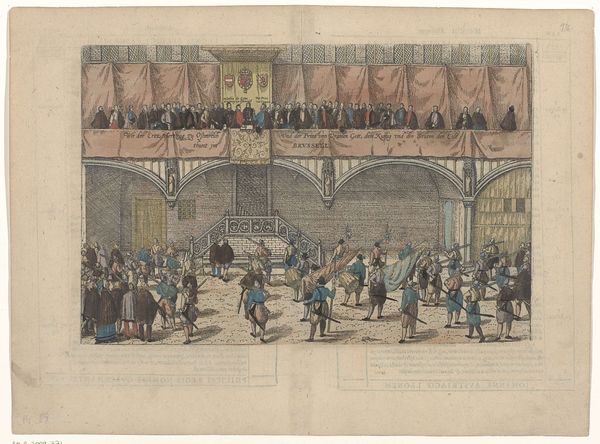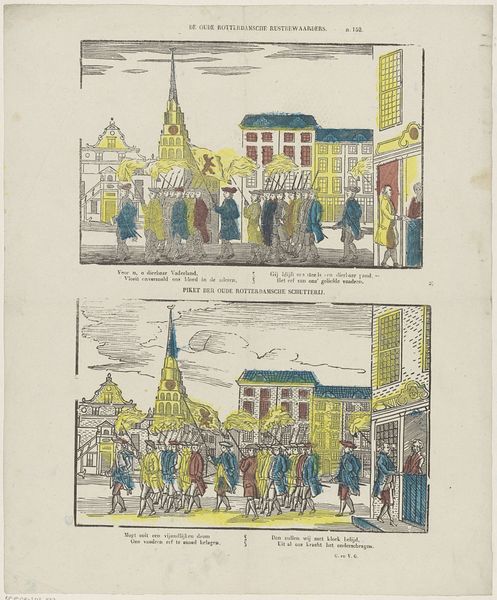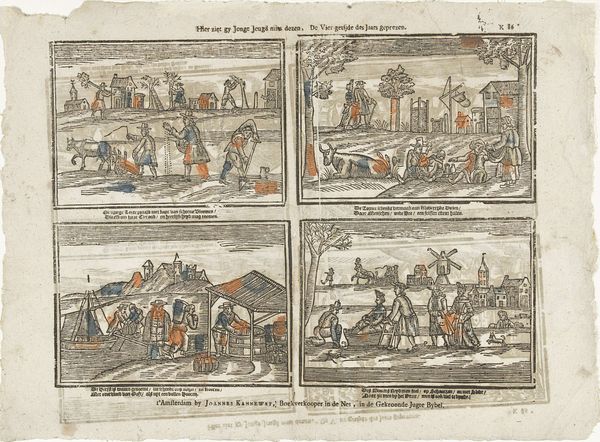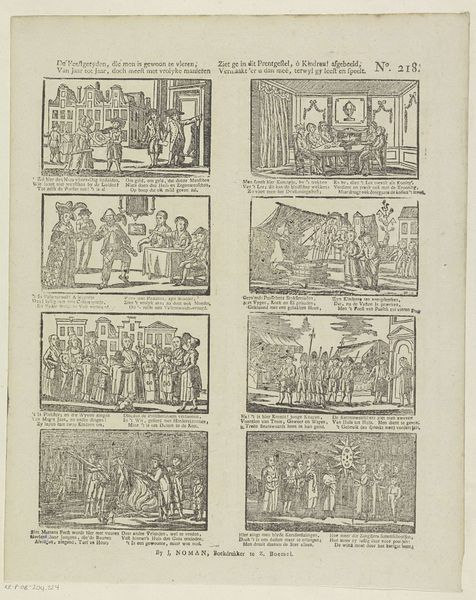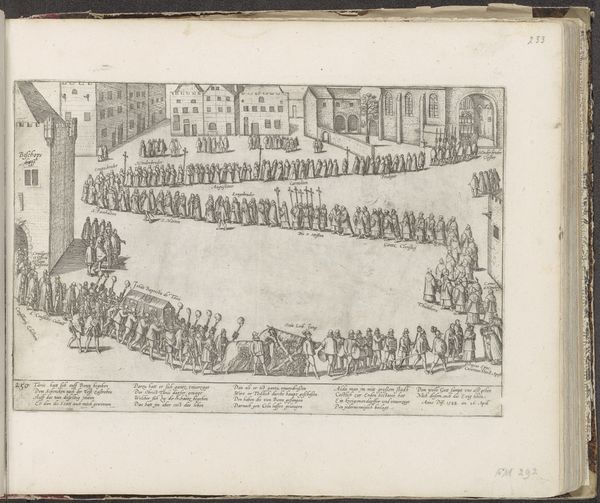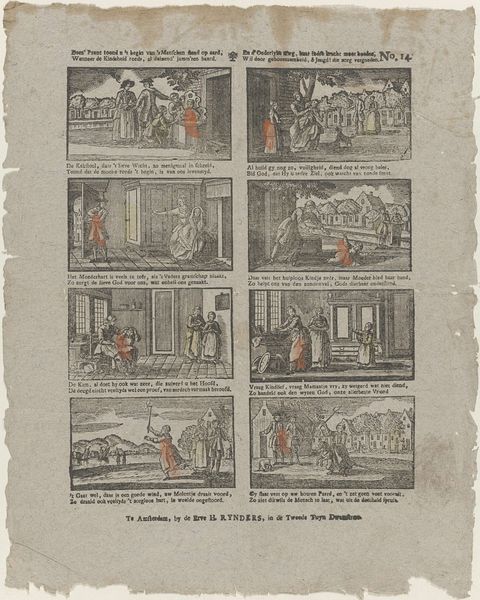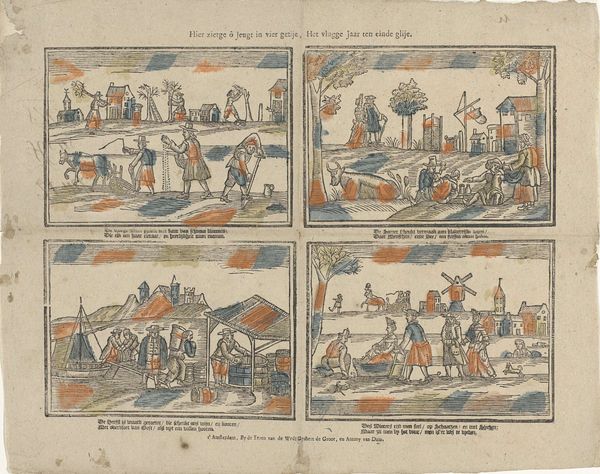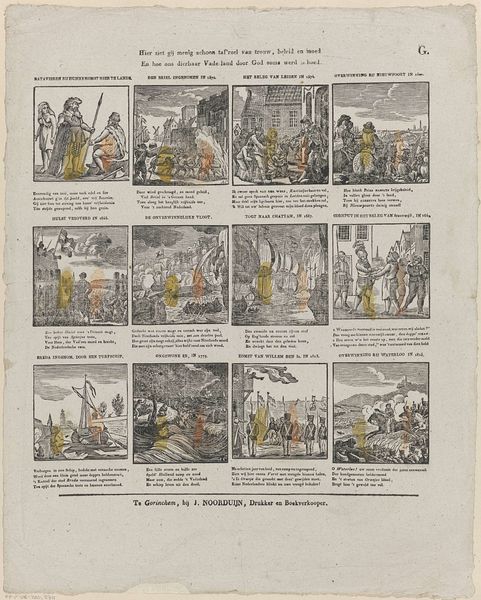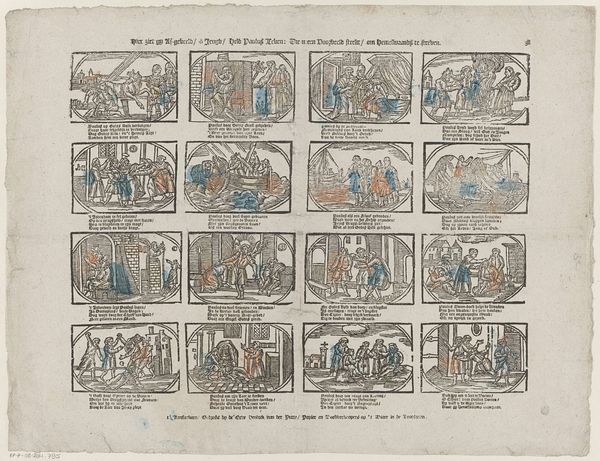
Kermisprent / met de afbeelding van de spellen en kramen en de optrekkende jongens na de beurs 1781 - 1828
0:00
0:00
print, engraving
#
narrative-art
#
dutch-golden-age
# print
#
line
#
cityscape
#
genre-painting
#
engraving
Dimensions: height 390 mm, width 320 mm
Copyright: Rijks Museum: Open Domain
Curator: Looking at this engraving titled "Kermisprent / met de afbeelding van de spellen en kramen en de optrekkende jongens na de beurs" by Jan Hendriksen, created sometime between 1781 and 1828, I immediately think of social hierarchies and festive disruptions. Editor: It’s really striking how the etching creates such clear contrasts—the crisp lines that delineate the figures and the built environment really emphasize the stark, utilitarian purpose of printmaking as a medium. Curator: Absolutely. Line engraving like this served not just an artistic function, but an informational one, documenting and disseminating images of social life. Look at how the buildings serve as a backdrop against which the activity of everyday individuals unfolds. What is the socioeconomic status of those within them? Are there themes or identities reflected here that we should analyze? Editor: Indeed. And examining the process by which the original design was etched into a metal plate shows a real dedication of labor in order to cheaply disseminate these prints widely. This raises the question: what sort of viewers and what class statuses were imagined to enjoy this kind of work? Curator: That's an excellent question. Prints like this circulated widely, shaping collective memory and communal identity. And considering Hendriksen’s identity, his positioning as the author of this work certainly affects the lens through which it depicts social life in the Netherlands. We can examine class dynamics as they are situated geographically and culturally within the image itself. Editor: Agreed. What fascinates me here is how this kind of reproducible image acts almost like a piece of proto-journalism; even today, the dissemination and production of similar materials remain dependent upon those with greater resources. Curator: I think that’s a pertinent connection to draw to our current world of image reproduction. Studying this engraving pushes us to reflect on who is controlling which images are circulated within society, both now and in the 18th century. Editor: Right, exactly. Thank you for this new perspective! Curator: And thank you for focusing our analysis through a materials-oriented lens!
Comments
No comments
Be the first to comment and join the conversation on the ultimate creative platform.
